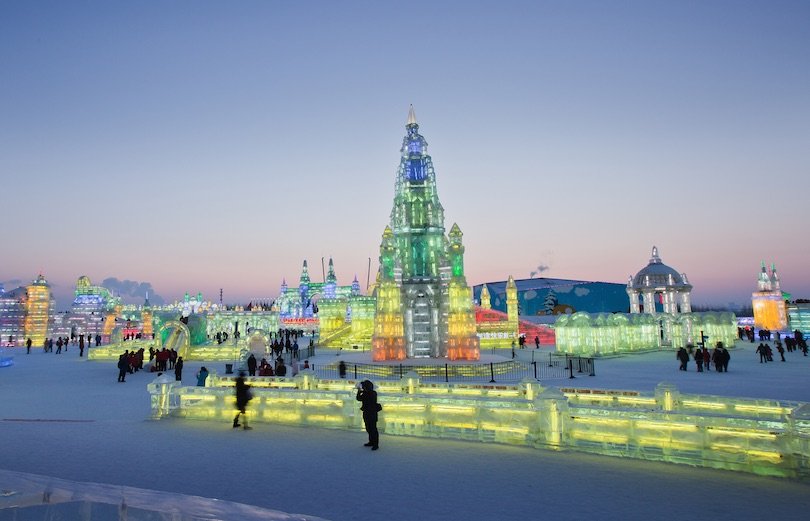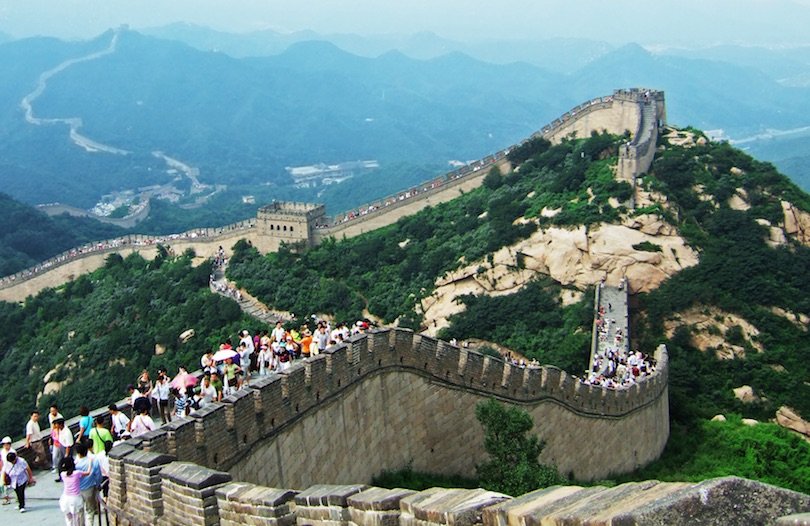9 Most Beautiful Regions in China, the second-largest country in the world, boasts a wide array of diverse natural landscapes waiting to be discovered. From the towering peaks of Tibet, which are among the highest on Earth, to the unforgiving deserts of Xinjiang Province in the western region, China offers a multitude of breathtaking environments to explore.
China’s most stunning regions are characterized by their extraordinary features. The vast Pacific coast of this immense nation spans an astonishing distance of 9,000 miles. Notably, it is home to the second and sixth-longest rivers globally, namely the Yangtze and the Yellow River. In the southern part, one can find lush subtropical forests alongside majestic mountain ranges. The harmonious blend of such abundant natural beauty and the rich heritage of one of the world’s oldest cultures renders China an enchanting and desirable place to visit.
Southwest China

Southwest China comprises some of the most renowned areas in China, including Tibet, Yunnan, Guizhou, and Guangxi, along with Chongqing and Sichuan. This region is widely recognized for its breathtaking scenery and serves as the gateway to Southeast Asia.
One particularly famous destination in this region is Tiger Leaping Gorge, located near Lijiang in Yunnan, which offers an awe-inspiring trekking experience. Yunnan Province as a whole is characterized by its mountainous terrain, making it an ideal destination for exploration.
For an extraordinary experience, venture into the Himalayas and visit the astonishing Three Parallel Rivers National Park, where the Yangtze, Mekong, and Salween Rivers converge. However, it is in Tibet where the most dramatic landscapes unfold. Known as the Roof of the World, Tibet offers the opportunity to trek through Qomolangma National Park and reach the Tibetan base camp of Mount Everest.
South-central China

To experience more of China’s iconic landscapes, a visit to the South-central region of the country would offer exceptional results. This landlocked area is renowned for its agricultural prowess and is also home to some of the most captivating sights in the nation.
In Hunan Province, you will be treated to the awe-inspiring sandstone pillars of Wulingyuan – precisely 3,000 of them. This picturesque region encompasses four national parks: Zhangjiajie National Forest Park, Tianzi Mountain Nature Reserve, Yangjiajie Scenic Area, and Suoxi Valley Nature Reserve. It is worth noting that this breathtaking scenery served as the inspiration for the otherworldly planet depicted in the film Avatar.
Hubei Province is where you can find the ambitious Three Gorges Dam situated on the Yangtze River. The entire area boasts stunning natural beauty, with towering gorges providing a mesmerizing backdrop. While the human-made dam project may evoke a sense of trepidation, its sheer magnitude is undeniably impressive. A trip to Wudangshan offers a glimpse into ancient history through its dilapidated structures, martial arts, Taoism, and a multitude of peaks adorned with meandering streams.
South China

The South China region boasts one of the most renowned landscapes not only in China but also in the entire world. In the town of Yangshuo, located in Guangxi Province, visitors can embark on a boat journey along the Li River. This experience evokes the sensation of being immersed in a Chinese painting, as karst limestone crags emerge from the ground.
Guilin, which is situated nearby, also showcases this captivating karst landscape. It offers various opportunities for hiking and leisurely strolls, such as the remarkable Moon Hill. Just a short distance from Guilin, the Longji rice terraces present a breathtaking sight. The rice paddies cascade down the hills in a series of overlapping layers, creating a stunning visual effect.
Within this region, Guangzhou stands as one of China’s three largest cities, bordering Hong Kong to the south. On the other hand, Hainan, China’s largest island, is a province of its own and remains somewhat enigmatic to many. Here, visitors can discover verdant hills, vibrant coral reefs, and botanical gardens set in a tropical environment.
East China

In the past, during the Qing Dynasty, China was compelled to open ports such as Qingdao, Shanghai, and Xiamen to the western world. However, at present, East China has become one of the most thriving regions in China. Places like Suzhou are renowned for their classical gardens, while West Lake, located in the heart of Hangzhou, also attracts a significant number of visitors.
For those seeking a more untamed natural experience, Anji County in Zhejiang Province is the ideal destination. It boasts a vast bamboo forest covering an expansive area of 235 square miles. Additionally, Lake Tai, one of China’s largest lakes, is home to more than 90 islands and is connected to Beijing through the renowned Grand Canal, which happens to be the oldest canal in the world.
Fujian Province is home to the picturesque Mount Wuyi. This scenic area showcases an ancient volcanic landscape adorned with numerous gorges and caves. Visitors can also enjoy breathtaking views of the Nine Bend River from elevated vantage points.
Special Administrative Regions
China’s Special Administrative Regions (SARs) are former colonial territories that have been embraced by China with open arms. Hong Kong was returned to China in 1997, while Macau was handed over by Portugal in 1999.
Although these regions are often associated with their bustling cities rather than their natural landscapes, there is much more to them than meets the eye.
Hong Kong

Comprising of the expansive Hong Kong Island, the mainland’s New Territories, and numerous smaller islands, this region offers much more than just towering skyscrapers and the dazzling glow of neon lights.
For a glimpse of the diverse avian species that migrate to this area, pay a visit to the Mai Po Marshes in Deep Bay (located in the New Territories). Marvel at the sight of migratory birds congregating around the marshes and mudflats, and keep an eye out for the elusive black-faced spoonbill. If you’re seeking more wildlife encounters, head to Repulse Bay on the southern part of Hong Kong Island. Here, you’ll find a picturesque setting with lush mountains and traditional houses, providing a habitat for various species.
Lamma Island offers an intricate network of hiking trails and pristine beaches, allowing you to immerse yourself in nature’s beauty. Meanwhile, the Dragon’s Back Trail presents awe-inspiring vistas above Tai Long Bay, while Lantau Peak on Lantau Island promises an unforgettable sunrise experience.
However, one of the most remarkable ways to appreciate the splendor of Hong Kong is by embarking on a hike through the untamed Sai Kung Peninsula. With scarcely any roads in sight, it’s hard to fathom that a bustling metropolis lies just a stone’s throw away.
Macau

Macau, although much smaller than its neighboring Hong Kong, is often associated with being China’s gambling hub. This is not entirely unfounded, as Macau’s casinos generate more than double the revenue of Las Vegas. However, beyond the bustling casinos, Macau also offers pockets of natural beauty.
For those seeking a hiking adventure, Coloane Island is the place to be. With an extensive network of eight kilometers of hiking trails, visitors can embark on a journey to the summit of Alto de Coloane. From there, they will be rewarded with a breathtaking panoramic view of the South China Sea. Coloane Island is also home to Hac Sa Beach, a serene coastal spot, as well as the Seac Pai Van Nature Walk and River Trail.
Another natural gem in Macau is the Hac Sa Reservoir County Park. Here, visitors can hop on a pedal boat and leisurely explore the park’s tranquil surroundings. It provides a perfect escape from the glitz and concrete of the city, offering a relaxed and family-friendly atmosphere.
Northeast China

Formerly known as Inner Manchuria and once a territory of Imperial Japan called Manchukuo, Northeast China shares borders with Russia, North Korea, and Mongolia. The heart of this region is the Northeastern China Plain, which is the country’s largest expanse of plains with an elevation of less than 200 meters. This vast area consists of farmland, wetlands, and marshes.
The largest city in this region is Harbin, a frozen outpost famous for its ice festival. During this festival, a mesmerizing display of sculptures is illuminated with a vibrant array of lights. However, there is also an abundance of natural beauty to explore here. The strikingly vivid Red Beach, located at the estuary of the Liaohe River, gets its name from the red seaweed that colors the shallows. This area is home to rare bird species and other wildlife.
For a unique experience, a visit to Xuexiang, where alpine sleigh rides are available, is highly recommended. It provides an opportunity to immerse oneself in the seven-month-long winters that this region experiences. Alternatively, for a more adventurous experience, the breathtaking Changbaishan mountain range is a must-visit. This mountain range is home to Siberian tigers and Amur leopards, adding to its allure.
North China

North China is undeniably the core of the People’s Republic of China. With agriculture still being practiced in the communist manner and the influential city of Beijing located here, this region holds significant importance. Moreover, it has a rich historical background, as rice cultivation has been documented in this area for over 9,000 years.
Venturing into the untamed landscapes of North China will reward you with an abundance of awe-inspiring scenery. A visit to Longqing Gorge will treat you to a picturesque boat ride amidst quintessential Chinese landscapes, characterized by limestone peaks and meandering waters.
For those seeking adventure, Jingdong Grand Canyon is the perfect destination. Embark on exhilarating hikes, conquer lofty peaks, and challenge yourself by crossing the river on daring suspension bridges. If you’re in search of one of the most breathtaking spots in North China, look no further than Miaofeng Mountain. With its towering peaks reaching over 1,300 meters, dizzying cliffs, and intricate caverns waiting to be explored, this place is truly awe-inspiring.
Northwest China is one of the 9 Most Beautiful Regions in China

Stretching from Xi’an to Xinjiang in the west, Northwest China is an expansive region known for its untamed landscapes. With its historical significance as a part of the Silk Route, this area is sparsely populated, with only four percent of China’s population residing in its deserts, mountains, and vast plains.
For an immersive experience of the wilderness, a visit to Dunhuang is highly recommended. Situated on the edge of the formidable Taklamakan Desert, this oasis is renowned for its Buddhist cave art. Here, you can marvel at the iconic Crescent Lake and the immense Singing Sand Dune, immersing yourself in the captivating desert scenery.
In Qinghai Province, you’ll find the mesmerizing Chaka Salt Lake, which boasts a mirror-like surface reflecting the surrounding beauty. Shaanxi Province is home to the awe-inspiring Huashan Mountain, known for its treacherous trails. Gansu Province offers a diverse landscape, featuring rugged peaks, desert canyons, and vast stretches of sand, all bordered by the majestic Great Wall to the north. One of the most extraordinary sights in this region is the otherworldly rainbow-striped mountains of Zhangye Danxia National Geological Park.





